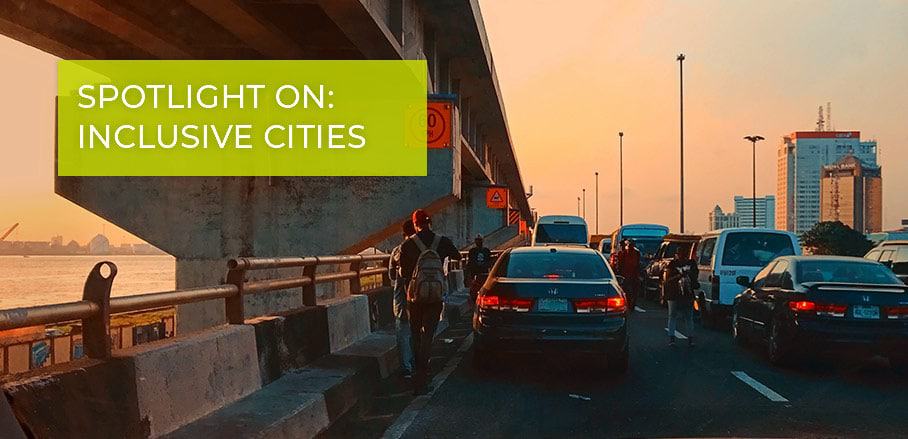Citizen Participation for Urban Transport Planning
Meelan Thondoo showcases how citizen participation in cities of low-and-middle income countries can contribute to sustainable urban transport policies and better urban living.
Cities in low-and-middle income countries (LMICs) face acute pressures due to increased motorisation, urban population growth, and environmental degradation. A major by-product of global, unprecedented urbanisation is that new towns and cities may develop without sustainable strategic planning – and thus develop risks to the health and well-being of their citizens, the environment, and natural ecosystems.
Citizen Participation in Cities
In high-income countries, citizen-centred approaches are commonly applied in urban transport planning, offering a potential solution to achieving more liveable cities, and spaces that respond to citizen needs and aspirations. Citizen participation has proven useful to boost governance processes, and to increase cost-efficiency and creative problem solving.
In European cities, collecting citizen views and preferences has enabled the design of infrastructures that are most likely to support and encourage healthy, active travel modes such as walking and cycling. Such initiatives are lacking in LMICs, while levels of urbanisation and motorisation are increasing dramatically.
Particularly, cities in sub-Saharan Africa are struggling to deploy urban transport strategies that encourage more sustainable and compact cities, healthy living practices, and environmental awareness. Rather, cities such as Lagos, Douala, and Nairobi are growing to be more car-dependent, even if urban residents, for social and economic reasons, primarily walk and cycle. In many fast-developing cities, car-centric measures fuel land-use paradoxes that do not respond to growing citizen demand for transport modes other than the car.
Citizen participation can be defined as a process that provides citizens with opportunities to take part in decisions planning process. Citizen participation is not limited to informing the population but also encourages degrees of influence and power. In the context of urban and transport planning, the lack of citizen participation can cause a misalignment between policy measures and citizen needs, which in turn can cause alarming levels of congestion, increased air and noise pollution, and traffic danger; all of which threaten human health and social equity.

Lagos City © Gideon Oladimeji/unsplash.com
Use of Citizen Participation Data in Urban Transport Planning in Africa
Our goal was to explore urban transport issues in an African city facing high burden of traffic mortality, health morbidity, and social inequity. To this end, we assessed the alignment, if any, of three government policy measures with self-reported citizens’ needs. Port Louis, the capital city of Mauritius, was used as a case study; the measures analysed consisted of a strategic plan for road safety, a scheme to modernise the public bus system, and a light rail transit (LRT) system. We also identified what population groups are most likely to be affected by possible misalignments.
In the study, citizens reported six main needs: the need for improving sidewalks (80 per cent), public spaces (77 per cent), green spaces (67 per cent), pedestrianising strategic areas (66 per cent), centralising street-vendors at bus stations (57 per cent) and regulating private vehicles in town (40 per cent).
Port Louis’ urban policies managed to address three out of these six needs: improving sidewalks, centralising street vendors at bus stations, and improving public spaces. All three were more likely to be expressed by poorer population groups. The policies did not respond to citizen needs for active modes of travel. They did not address health and social co-benefits of transport. Rather they emphasised an economic agenda focused on transport infrastructure, as opposed to policy reforms that are in line with public needs and much more strongly highlight the integration of urban transport planning into social life.
The study showed that health and social benefits can result from applying a citizen-centred lens to the assessment and design of urban transport planning policy in cities of LMICs, comparable to Port Louis.

Port Louis Market Street © Herr Olsen/flickr | CC-BY-NC 2.0
Implications for Policy Makers
Citizen-centred approaches provide a unique opportunity to reform urban transport planning policies towards more healthy and equitable cities in fast-developing countries. Rather than responding to increasing traffic by the provision of transport infrastructure and services, governments should concentrate efforts on policy formulation and traffic regulation.
The results of our study show that transport policies aiming at improving the way cars move from one place to another only partly responds to citizen needs. Even with an ideal transport infrastructure in place, walking is usually still the main mode of transport in developing settings such as Mauritius – and the one that provides better health and more equalitarian accessibility. The lack of walking infrastructure (pedestrianising options) is made evident by unmet citizen needs that are clearly more focused on walking than improving the conditions for driving or public transport.
The results also suggest that misalignments between policies and needs are caused by gaps between economic objectives of decision makers and social priorities of citizens. Policies can better respond to citizens’ needs for infrastructure requiring substantial economic planning (example: improving sidewalks) that are integrated into a wider social framework of needs (example: meeting in green spaces) and imply the use of active travel modes (example: walking).
Future of Citizen Science in LMICs
The application of citizen science to urban transport planning in LMICs can provide unforeseen opportunities for fast-developing cities. Data from citizens can inform urban planners on lived experiences and constraints imposed in cities. Such experiences can shed light on the needs of vulnerable populations and lead to urban policies that positively influence social equity. Citizen participation can also be an efficient method to adapt policy making processes to the local situation and plan for activities (such as street vendors or three-wheelers) that are specific to LMICs.
Several recommendations may be useful to policy makers involved in urban transport planning in LMICs:
(1) Plan for citizen-centred approaches by preparing in advance the time, money, and human resources to facilitate the integration of citizen needs into policy design and reforms;
(2) Analyse, consider, and prioritise the gaps that may exist between health, economic, and social priorities when investing in large urban and transport planning interventions;
(3) Use citizen needs stratified by demographic indicators to design urban and transport planning interventions aiming for social, health, equity-driven co-benefits.
Studies focusing on the needs of different populations groups are valuable for policy makers to tailor their agendas to populations in most need for sustainable and healthy urban systems. Satisfying needs such as improving sidewalks and freeing space occupied by street vendors go a long way in improving the daily lives of the urban poor. Therefore, considering citizen needs provides a unique opportunity to reform urban transport planning policies towards more healthy and equitable cities in the developing world.
- Citizen Participation for Urban Transport Planning - 6. April 2021
